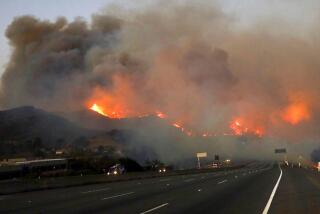A Skewed Equation
After all the rhetoric and the sniping and the campaigning, the effort to split the San Fernando Valley from Los Angeles will come down to the numbers--and count on seeing plenty of them over the next two years. Many will no doubt conflict with those that came before, just as each new set will no doubt be heralded by this side or that as proof of either the wisdom or the foolishness of fracturing the nation’s second-largest city. So it was this month with a state study concluding that the Valley generates more sales tax than the citywide average.
Instantly, secession advocates pointed to the numbers as evidence of their long-held beliefs that the Valley gets less than it gives and would be better off without the rest of Los Angeles. The numbers compiled by the State Board of Equalization show that the Valley generated 42% of the $249 million in sales tax received by Los Angeles in 1996--despite accounting for just 34% of the city’s population. While true that the numbers suggest the Valley has a strong enough sales tax base to make cityhood financially feasible, they do nothing to support the argument that the Valley gets shortchanged by the rest of the city.
The Times remains unconvinced that secession is the best way to deal with the very real problems plaguing Los Angeles. We favor a disciplined and rational reform of the city’s outdated charter as a way to make Los Angeles more responsive to the needs and dreams of its residents--all of them. On a fundamental level, the neighborhoods of Los Angeles as it now stands are connected in thousands of invisible, but important, ways. Each benefits from being connected to the others. The Board of Equalization’s study reveals nothing to refute the notion that the Valley is as dependent on the rest of the city as the rest of the city is on the Valley.
Why not? Sales tax is location-based. For instance, if a Glendale resident buys a car in Burbank, a portion of the sales tax is returned to Burbank--but Glendale gets nothing. It’s less clear-cut in a big city like Los Angeles. So if a resident of San Pedro buys a car in Van Nuys--both of which are part of Los Angeles--the sales tax goes straight to Los Angeles to spend however--and wherever--it sees fit. That’s essentially how the Board of Equalization compiled its report: by tallying up the sales tax revenue generated within the geographic boundaries of the Valley.
But those numbers say nothing about where consumers live. Unless every Valley sale in 1996 was made to a Valley resident, the Valley’s sales tax figures got a boost from residents in other parts of Southern California. Who benefits? Valley merchants and shop owners. Yes, the Valley generates more than its share of sales tax, but the money driving those sales may come from Palms as well as Pacoima. The numbers make a point, but not necessarily that which those clamoring for the Valley’s “fair share” think.
More to Read
Get the L.A. Times Politics newsletter
Deeply reported insights into legislation, politics and policy from Sacramento, Washington and beyond. In your inbox three times per week.
You may occasionally receive promotional content from the Los Angeles Times.










